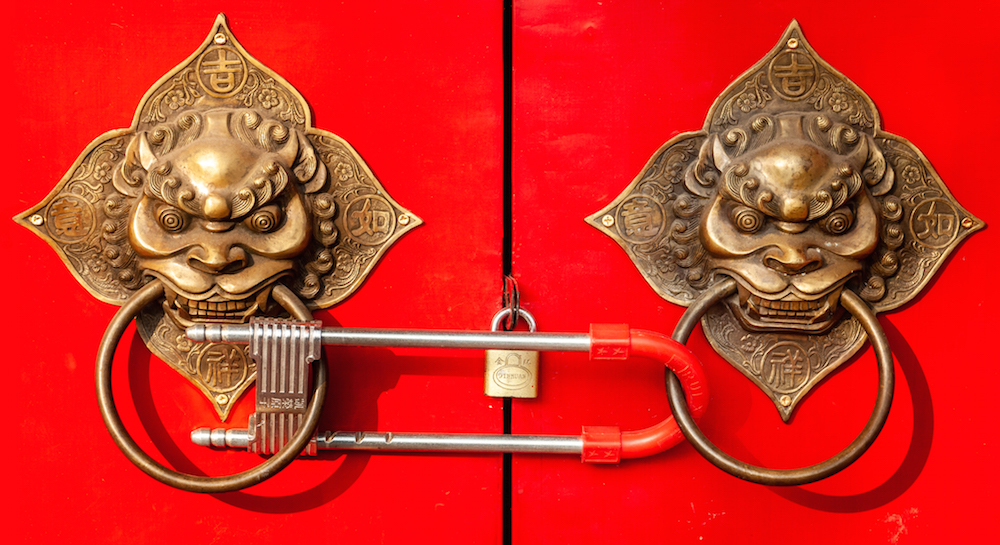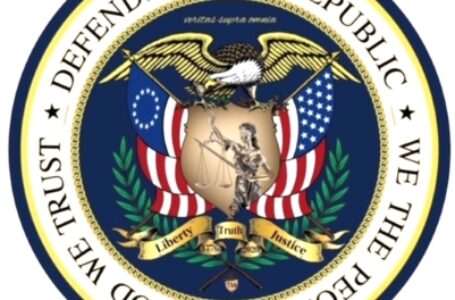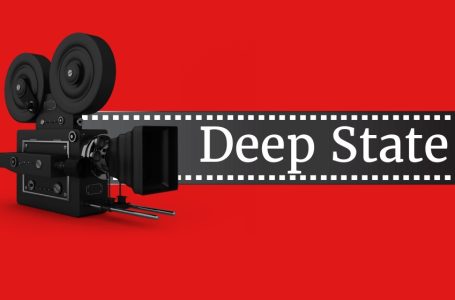Winning the New Cold War

https://www.thebeijinger.com/
November 13, 2020
China’s actions during the COVID-19 pandemic, and its extensive other aggressions and abuses, demonstrate it to be an adversary. Its rise imperils global liberty, threatens stability, and weakens the standing of international norms and law. Competition with China poses a greater challenge than ever posed by the Soviet Union (USSR) during the Cold War. The U.S. was slow to recognize China’s adversarial rise. Its economy has swiftly grown to rival that of the U.S. in size and is increasingly globally interconnected. It is building a formidable military, a skilled propaganda apparatus, and coercive economic leverage. Alarmingly, a nation that explicitly espouses hostile intentions, and is rapidly enhancing its already formidable coercive capabilities, has become a preeminent source for industries critical to U.S. national security. These include rare earth elements (REE), pharmaceutical products, and 5G telecommunications vulnerable to Chinese espionage. Regardless of which administration is in power, the U.S. must end its strategic reliance on China. It should use China’s culpability in the spread of COVID-19 to galvanize domestic and international support for difficult but necessary competition.
China’s Culpability in the COVID-19 Pandemic
For a critical two-months, China deceived the world by denying that COVID-19 could be transmitted between humans. Instead, it used its influence in the World Health Organization (WHO) to block credible Taiwanese research, which disputed that narrative.[i] By the time China publicly admitted human-to-human transmission, over five million people had left Hubei province, spreading the virus worldwide.[ii] Throughout that time, China imposed a domestic, but not an international travel ban.[iii] To date, the pandemic has killed over a million people, left millions more permanently impaired, and crippled economies globally.[iv]
A leaked Five Eyes intelligence dossier documented the extent to which U.S. allies believe that China lied about COVID-19.[v] A Department of Homeland Security Report claimed that China hid the virus’s severity to hoard supplies.[vi] The Chinese Communist Party (CCP) threatened, imprisoned, vanished, and, (reminiscent of Solzhenitsyn’s writings on the Soviet Union), forced doctors to recant and sign documents stating that they had lied to spread rumors.[vii]
As the virus spread, the CCP launched a propaganda campaign blaming the U.S. for the pandemic and expelled U.S. journalists. China’s foreign ministry spread the lie that COVID-19 resulted from a U.S. Army experiment, conjuring parallels to Soviet propaganda that the CIA invented AIDS.[viii] China’s official Arabic language channel promoted the narrative of U.S. responsibility as well.[ix] Meanwhile, CCP agents worked to sow panic in the U.S. through text messages and social media posts.[x]
China’s mismanagement of COVID-19—like the USSR’s failures during the Chernobyl catastrophe—was exacerbated by the propagation of deliberate disinformation intended to save face. In both cases, the hubris to attempt to cover up culpability in a global catastrophe was wrought by a sense of rightful claim to the mantle of global leadership, combined with an autocratic government without transparency or accountability.
China’s Adversarial Rise
China’s rise is the greatest threat to U.S. security, interests and values since the Cold War. Its aggressions include forced imprisonment, indoctrination, and sterilization of Uyghur Muslims in Xingjian province, breaching international law to tighten control over Hong Kong, forcing Tibetans into labor camps, disputes with Japan, Taiwan, India, Vietnam, the Philippines, Malaysia and other countries, and terraforming and militarization in disputed waters in the South China Sea. Images of shaven headed prisoners forced onto trains, and the interdiction of shipments of human hair shorn from Uyghur prisoners, evokes images of the Holocaust. Described as “the world’s most technologically sophisticated genocide,” China’s actions foreshadow the horror the world can expect from expanded Chinese power.[xi]
China’s leadership sees the U.S. as an enemy to be overcome on the path to global domination. Its military documents suggest a primary strategic goal to capture Taiwan.[xii] A high-ranking Chinese general warned that China will militarily conquer Taiwan if it cannot dominate it by other means.[xiii] The U.S. has responded every time Taiwan has come under threat since the end of the Chinese civil war in 1949. If China were to execute its threat to invade, U.S. resolve, and credibility as an ally would be put to the test. The U.S. would be unable to concede without eviscerating its key strategic advantage as the leader of a voluntary alliance network, while a response to reverse a fait accompli would be costly and risk severe escalation with a nuclear power. America’s best strategic option is deterrence through clear, visible overmatch.
The balance of power in the Indo-Pacific is rapidly shifting in China’s favor, eroding the credibility of U.S. extended deterrence. China spends four times more than Russia on its military. U.S. allies in Asia spend half of what its European allies spend on their defense.[xiv] The military threat from China to its region is much greater than the sizable threat posed by Russia in Europe, while China’s economic ability to carry out sustained military action far surpasses Russia’s. The U.S. military undergirds collective defense in both regions.
China is conducting the largest military expansion and modernization in its history. Its defense spending rose by 85% from 2010-2019 while U.S. defense spending fell by 15% in the same period.[xv] The popular talking point that the U.S. has an outsized defense budget and spends more than the next ten countries combined is both outdated and dangerously misleading.[xvi] Adjusting for labor costs, China’s defense budget in 2017 was $467.4 billion. Considering its narrower mission and lower personnel costs, China’s defense spending closely rivals that of the United States.[xvii]
China is the only country with the economic and technological base to build a military capable of competing with the U.S. globally.[xviii] Its leader wants a military capable of defeating the U.S. by 2050.[xix] It is already stronger than Russia in virtually every respect other than its nuclear arsenal, which it seeks to double. It is near parity with the U.S. in quantum computing and artificial intelligence and leads the U.S. in hypersonic weapons.[xx]
Why Compete?
The U.S. must return to realist—power based—logic. As China rises, the international structure mirrors historical moments of violent transition.[xxi] A dominant power’s fear of a rising competitor explains great power conflicts, including both World Wars. The twentieth-century exception—where the eclipsing of a dominant power did not spark conflict—was when the U.S. overtook Great Britain. In that case, the rising and declining powers shared common culture, economic and political models. This is not the case with China. Great Britain had little reason to fear the rise of the U.S., but the U.S. and its partners have ample reason to fear China’s rise under its current political structure.
Liberalism—which argues that international and domestic institutions can mitigate the role of power, and its incentives for conflict—has dominated the discourse in U.S. foreign policy circles in recent decades. This thinking shaped U.S. policy towards China from the Nixon through the Obama administrations.
This mistaken reasoning is dangerous. International institutions have not led autocracies to democratize and respect international norms. Rather, illiberal regimes have captured and used these institutions to advance their own agendas and accrue power. China’s capture of the WHO, and the devastating effect that this had on global preparedness for COVID-19, exposes the folly of relying too heavily on international bodies.[xxii] Others have raised concerns over China’s capture of the International Telecommunication Union, where the China backed secretary-general “sought to insulate China from agreed practices on internet governance” and dismissed warnings over Chinese 5G security vulnerabilities.[xxiii] Finally, China’s opportunistic shredding of international treaties in its policy towards Hong Kong suggests that its foreign policy is increasingly defined by Realpolitik as it grows in power.
A U.S. decision to shift to a more confrontational strategy begs three questions: 1. Is China really on a trajectory to overtake the U.S. in economic and military power? 2. Will China use its superiority to expand its influence at the expense of the U.S.? And 3. Is Chinese global leadership something that the U.S. can abide, comparable to Great Britain peacefully ceding global preeminence to the U.S.?
The answers to the first two questions are clearly yes. 1. China’s power is rising faster than U.S. power, although the rate depends on complex factors, including how the U.S. chooses to compete. 2. China intends to abrogate long-standing treaties by force if necessary. Regarding the third question, U.S. security, and the global order that enables the American way of life depend upon U.S. power. Because China is rising, intends to overturn the world order, and this threatens vital U.S. interests, the U.S. faces a Cold War with China, and it must compete to win.
The U.S. Is Unprepared to Compete
The Cold War was ultimately decided by greatly superior and steadily widening U.S. economic strength that the USSR could not compete with.[xxiv] This dynamic does not exist in China.
Unlike currently with China, during the Cold War, there was minimal interconnectivity between the U.S. and its rival. The U.S. did not rely on the USSR for inputs critical to its defense and healthcare. Allied communications were not conducted over Soviet infrastructure. Hundreds of thousands of Soviets were not studying physics, chemistry, biology and engineering in U.S. universities. The USSR lacked the leverage to coerce U.S. businesses and media to self-censor. The USSR did not hold vast quantities of U.S. sovereign debt. Furthermore, the “Iron Curtain” that separated the U.S. from the USSR is more like a one-way mirror for China. China accesses U.S. institutions while selectively closing its population to U.S. influence.
Post-Cold War triumphalism partially explains the U.S. failure to compete. Francis Fukayama referred to the U.S. led post-Cold War order as “the end of history.”[xxv] Furthermore, China rose with astonishing speed. In 2000, its GDP was less than 12.5% of America’s. By 2014, China had overtaken the U.S. as the world’s largest economy on a Purchasing Power Parity basis.[xxvi]
The U.S. recognized the USSR as a strategic rival early on, even as it allied with it against Nazi Germany. In 1947, George Kennan articulated this in The Long Telegram. Competition became the cornerstone of U.S. foreign policy for the next five decades. It dominated diplomacy, defense, economic competition, and even popular culture. There is no parallel for China. There is no anti-China equivalent to the anti-Soviet television series Rocky and Bullwinkle. Indeed, many Hollywood producers, corporations, and even sports associations, bow to Chinese censorship demands.[xxvii]
Since the U.S. first established diplomatic relations with China in 1979, U.S. policy was premised on the belief that engagement would spur China to become more open and democratic. Influential leaders argued that China would move closer to a free and open capitalist system as its wealth grew. Instead, China has harnessed the advantages of both systems, growing economically with a hybrid free market and government investment in strategic industries while enhancing its repressive apparatus through surveillance and artificial intelligence.[xxviii] The USSR wasted vast sums on foreign military adventurism and controlling its empire by force. China exerts influence through exploitative “debt trap” diplomacy and propaganda, in some cases unwittingly enabled by western media passivity that the USSR would have envied.[xxix]
The U.S. leads the world in innovation and growth. Yet, it faces difficulty transforming economic might into military power because budgetary stability, needed for long-term defense modernization and readiness, is subject to constant political competition. China pushes sustained military aggrandizement and investment in critical emerging technologies by executive fiat. It can also offer to finance projects in developing countries with fewer regulations and demands. It can offer quick, hard to track, money and cheap, available technology and construction packages.[xxx] Chinese law gives its government the ability to access any information that Chinese companies collect, facilitating espionage.[xxxi] Indeed, China relies on espionage to offset its innovation disadvantages.
Chinese Espionage
Chinese espionage in the U.S., rampant for decades, has greatly increased in the cyber era. Both Russia and China are spying on and attempting to disrupt U.S. efforts to combat COVID-19.[xxxii] In 2018, U.S. Attorney General Jeff Sessions announced the China Initiative to identify trade theft cases and evaluate legislative and administrative authorities to protect against foreign espionage. Attorney General William Barr stated: “The Chinese are engaged in a full-court blitzkrieg of stealing American technology, trying to influence our political system, trying to steal secrets at our research universities, and so forth.”[xxxiii]
In 2018, Secretary of Defense James Mattis established the Protecting Critical Technology Task Force. Its director warned that China’s technology theft erodes the lethality of the joint force, that the U.S. is in a daily fight with Russia and China in universities, industry and the military, and that the U.S. has unwittingly become China’s research and development base. The task force has uncovered thousands of cases of data theft over the past decade.[xxxiv]
Espionage is not just a cyber problem. China buys classified technologies, requires businesses to divulge classified information, and exploits the openness of U.S. universities, businesses and institutions. Some examples include: the arrest of Harvard University’s chemistry Chair for failing to disclose Chinese funding; the conviction of a UCLA professor over a plot to obtain microchips with military uses from an American company and export them to China; and the arrest of a NASA researcher for failing to disclose ties to the Chinese government.[xxxv]
In May 2020, in the wake of escalating tensions and in response to China’s crackdown on Hong-Kong, the Trump administration canceled the visas of around 3,000 Chinese graduate students and researchers with direct ties to universities affiliated China’s People’s Liberation Army.[xxxvi] In July 2020, the U.S. shut down the Chinese consulate in Houston, which it accused of being an espionage hub, prompting a scramble to destroy sensitive documents. Secretary Pompeo also called the Chinese Embassy in New York an “espionage hub” after a New York Police Department officer was charged with spying for China.[xxxvii] The U.S. followed up the closing of the Chinese consulate in Houston by reducing the number of Chinese diplomats in the U.S. to reduce the burden on FBI counterintelligence agents. The FBI currently opens a new Chinese-related case on average every 10 hours.[xxxviii]
The U.S. cannot continue spending billions of dollars on unsecure programs. U.S. dependence on China for defense critical raw materials constitutes another glaring strategic gap.
Reliance on China for Rare Earth Elements
The U.S. relies on China for REEs, which form the base of important defense industry supply chains. Over the past two decades, China has gained control over approximately 90% of the world’s REEs. Between 2004 and 2017, 80% of U.S. REE imports came from China. REEs are critical to items, including satellites, GPS navigation equipment, microelectronics, rechargeable batteries, cellular phones, fiber optics, computers, vehicles, jet engines, lasers, night-vision devices, and precision-guided munitions. Each F-35 aircraft—the backbone of U.S. airpower—requires 920 pounds of REEs. A U.S. Army report called REEs “the new oil” because of their importance for military equipment, including long-range precision weapons, the U.S. Army’s top modernization priority.[xxxix]
China understands its leverage. Its former leader Deng Xiaoping likened it to the Middle East’s control of the oil market.[xl] Until relatively recently, China has refrained from using its market control for diplomatic coercion. Following a 2010 maritime dispute, China halted REE shipments to Japan and the United States.[xli] In 2019, China threatened to withhold REEs from U.S. defense contractors. According to a 2019 GAO report, the U.S. averages over 50 percent import reliance for four of the six minerals categorized as critical. Of these, magnesium is predominately supplied by Israel and Canada. The others are mostly supplied by China.[xlii]
The U.S. should cut reliance on China for these critical elements by securing friendly sourcing and boosting domestic extraction and refining. Japan showed that it can be done. Since China cut them off from essential REEs in 2010, the Japanese government diversified supply, and in under a decade, cut its reliance on China by a third.[xliii]
The U.S. also seeks to diversify supply. The 2019 National Defense Authorization Act limits defense contractors’ ability to use REEs from non-allied countries.[xliv] Significant REE deposits exist in Brazil, Canada, Australia, India, Australia, Japan and Denmark. These potential friendly sources, along with increased domestic production, can offset reliance on China.
In 2017, President Trump issued an Executive Order to boost domestic exploration and mining. In 2019, U.S. rare earth production grew 44%. In September 2020, President Trump ordered his cabinet secretaries to cut U.S. REE dependence on China, currently at 80%. This broad Executive Order explicitly calls for cutting mining regulations and could lead to tariffs, quotas, or other possible import restrictions.[xlv]
Legislatively, the American Mineral Security Act and the National Strategic and Critical Minerals Production Act propose mine-permitting reform. The Onshoring Rare Earths Act would require the Department of Defense to source REEs domestically. At least three U.S.-based companies have rare earth processing plants under construction or in the planning stages. 16 of the 17 rare earths can be mined in the U.S. at a west Texas site currently under development, as well as at several other sites. [xlvi]
Reliance on China for Healthcare Products
Until the 1990s, most U.S. medical products were manufactured domestically. China now produces about 90% of the chemicals used in the generic drugs used in the U.S. and dominates protective personal equipment export.[xlvii]
Reliance on an adversary is risky. If U.S. personnel were to be wounded in an altercation with China, their treatment might depend upon ingredients made in China.[xlviii] This mirrors the absurdity that U.S. military hardware requires materials from China. U.S. policymakers also fear that China could curb exports in the midst of a pandemic.[xlix] The U.S. should increase imports from friendly nations as it rebuilds its domestic industry.
President Trump signed an executive order in 2020 to boost domestic medical production.[l] Congress should pass tax and regulatory laws to make U.S. manufacturing more competitive. Restoring tax exemptions for Puerto Rico, with its relatively low labor costs and existing medical industry infrastructure, could increase domestic sourcing and rebuild its once flourishing medical supplies industry.[li] Continuous manufacturing and 3D printing could also help U.S. pharmaceutical manufacturing competitiveness. Some drugmakers are already moving in this direction with FDA support.[lii]
Chinese 5G Proliferation
Many U.S. allies and partners have 5G telecommunications networks being built at least partially by Huawei. Security risks include vulnerability to hacking and a backdoor for the Chinese government. The U.S. has warned allies that it would be more difficult to partner with countries that use Huawei.[liii]
The Five Eyes allies generally appreciate the risks posed by Huawei for allied interoperability. Australia shut out Huawei. New Zealand originally rejected a request from its largest telecom carrier to use Huawei equipment but has since reversed course. The United Kingdom banned Huawei from its 5G networks following U.S. pressure. Canada has effectively blocked Huawei by delaying a contracting decision. Canadian telecommunications companies, impatient and fearing potential future U.S. restrictions, opted to work with Sweden’s Ericsson and Finland’s Nokia instead.[liv]
The U.S. is also pressing its European allies and other international partners to exclude Huawei, with varying results. The European Commission voiced concerns over Huawei’s vulnerabilities but estimated that a ban would add $62 billion to the cost of 5G in Europe and delay it by 18 months.[lv] Poland is considering excluding Huawei. The Czech Republic is considering bans or cuts. France and Italy took steps to exclude Huawei.[lvi] Germany is leaning towards allowing Huawei to build part of its 5G network, despite U.S. warnings that this could harm intelligence sharing. China’s ambassador threatened retaliation if Germany excludes Huawei, noting the millions of vehicles German automakers sell in China.[lvii]
Japan banned Huawei from government contracts in 2018.[lviii] India’s reluctance to block Huawei is a major setback. The U.S. might be able to leverage India’s tensions with China rise following recent border skirmishes to offer support in exchange for banning Huawei.
In the Middle East, the United Arab Emirates announced that it would deploy a 5G network built by Huawei.[lix] Another U.S. partner, Israel, will not be selecting Chinese firms for a role in constructing its 5G network.[lx] Military technology and intelligence sharing played a significant role in the U.S. brokered landmark peace deal between Israel and the UAE. This included discussions of future U.S. sales of the F-35 fifth-generation stealth fighter to the UAE. This sale will be a major qualitative boost for UAE’s military. The U.S. might consider making the scale of military cooperation with the UAE contingent on its rejection of Huawei.
Since 2018, the U.S. government has introduced export controls, bills restricting federal government contracts, and warned allies and partners over reduced defense interoperability. These warnings carry weight since the U.S. is the military backbone of European, Asian and Middle Eastern collective defense.
Pressure and restriction are not enough. Huawei is currently the best provider of 5G capability per cost. The Swedish company Ericsson is a distant second, and Nokia is third. The U.S. should work with partners to develop a viable alternative to Huawei. To this end, the Trump Administration established a 5G strategy in March 2020.[lxi]
Cutting Reliance on China
The oil shocks of 1973 exposed U.S. vulnerability to threats and blackmail. Its silver lining was that it forced western companies to diversify their sources. Ultimately, this made U.S. energy supply more resilient and affordable. China’s actions during the COVID-19 pandemic might have a similar effect.
Reducing reliance on China is not without cost. Many businesses in the U.S. and partner nations have a major stake in access to the Chinese market. With a middle class larger than the entire U.S. population, threats to bar access have led Hollywood and the NBA to self-censor to meet CCP demands.
Democratic governments can create incentives for companies to withdraw from China. Japan’s COVID-19 recovery package requires companies receiving aid to withdraw manufacturing from China.[lxii] The U.S. government should enact similar policies.
President Trump’s second term agenda states among its goals; tax credits for companies that bring back jobs from China, expensing deductions for essential industries like pharmaceuticals who return manufacturing to the U.S., and banning companies who outsource to china from federal contracts. Whichever administration is in power in 2021 should enact these important priorities.[lxiii] The U.S. should also increase bilateral trade and promote a multilateral trade structure that replaces the scrapped Trans-Pacific Partnership. A new version should adequately protect U.S. manufacturing.
Competing for the Narrative
The U.S. must compete with China—as it did with the USSR—for the future of an idea, that of liberty and democracy. Victory is never assured. The CCP is using the COVID-19 pandemic to advance the narrative that its authoritarianism is “superior to the messy open politics of the West.”[lxiv] Highlighting China’s role in the spread of this devastating pandemic is a powerful way to elucidate the dangers of repressive and opaque authoritarianism.
Until recently, the CCP’s externally oriented propaganda mainly sought to promote China as primed for benign and effective global leadership. In the wake of COVID-19, CCP disinformation has mimicked Russian efforts to paint the U.S. as aggressive, cruel, and to blame for the pandemic. The U.S. State Department has warned of opportunistic Russian-PRC cooperation to spread disinformation.[lxv]
U.S. information capabilities have atrophied since the end of the Cold War. Meanwhile, Russia and China have made innovative strides in the strategic use of disinformation. During the Cold War, the U.S. actively promoted the superiority of the ideals of liberty and democracy over Soviet tyranny. The U.S. government decisively blamed the Soviet Union for the Chernobyl nuclear meltdown and cover up.[lxvi] That disaster shook domestic and international faith in the USSR and hastened its collapse. Similarly, the U.S. should highlight the CCP’s malfeasance during the COVID-19 pandemic to drive the international community away from China and embolden its liberty seeking dissidents.
PRC leadership understands the importance of the information sphere. An internal Chinese report warned that in the pandemic’s wake, Beijing faces hostility, comparable to the aftermath of the Tiananmen Square massacre.[lxvii] The CCP is eager to erase terms like “Wuhan Coronavirus” from public discourse. COVID-19 has changed the global conversation from China’s technological, organizational and manufacturing prowess to how the country is governed. Perceptions of China’s reliability, as well as its status as a friendly nation, competitor or adversary, will influence whether companies continue to invest hundreds of billions of dollars into supply chains based in China.
Competition in the information sphere requires more than government efforts. The U.S. media must take greater care to expose, and not unwittingly broadcast, foreign disinformation. In U.S. universities, a pervasive unwillingness to defend U.S. values, and in some cases, the active promotion of the CCP’s narrative, is alarming. Noting the closure of PRC funded Confucius Institutes dedicated to spreading Marxism on campuses, professors Richard Geddes and Barry Strauss call for robust debate on the merits of Communism versus Capitalism.[lxviii]
Former U.S. National Security Advisor H. R. McMaster supports highlighting the freedoms of an open society to Chinese nationals in the U.S. so that they may contrast the freedoms in the U.S. to the censorship they face in China. This requires aggressively countering intimidation by CCP agents in the United States.[lxix]
Finally, for the U.S. to lead the free world as it did during the Cold War, it must rekindle dwindling patriotism. This requires reckoning with America’s past and present failings while reaffirming its triumphs and virtues. Recent polls have shown an increasingly negative view of America, its founders and the values it represents among our nation’s youth.[lxx] This partially stems from a curriculum, heavily influenced by critical theory, that has overcorrected for a rosy view of U.S. history and the Constitution with a narrative that delegitimizes U.S. institutions and values, distorts history, and sows division.[lxxi] President Trump’s 1776 Commission seeks to counter what has become an asymmetrically negative curriculum and public discourse.[lxxii] Americans, and especially the youth, must be proud of their nation’s values and see it as a force for good in the world in order to compete with an autocracy like China, which indoctrinates nationalism as a matter of policy.
Economic and Diplomatic Competition
Compounded with China’s increased aggression and human rights abuses, the COVID-19 pandemic could foster a global consensus on China as a malign actor and not simply as a competitor. The U.S. should lead this effort by countering propaganda, condemning abuses and unwaveringly supporting liberty and partners under threat, even if this creates short-term economic losses.[lxxiii]
There has been increasing international backlash towards China in the wake of the pandemic. This includes the growing mistrust of China in Europe and Africa. British ministers publicly blamed China for its cover up. Germany’s largest newspaper sent Beijing an itemized bill for damages, and Australia called for an inquiry into China’s mishandling of COVID-19.[lxxiv] The spread of COVID-19 resulted from a colossal failure of China’s governance and institutions. This has major negative implications for initiatives that the CCP considers integral, including the Belt and Road Initiative and Made in China 2025.
Since the outbreak of COVID-19, there has been an emerging bipartisan consensus in the U.S. that China is a dangerous adversary. Congress has sought to enact significant economic measures to counter China’s abuses. Senator Ted Cruz and Senator Marco Rubio’s Uyghur Forced Labor Prevention Act to bar companies benefiting from slave labor is a good start. Furthermore, in a show of overwhelming bipartisan support, which is rare in these polarized times, the House of Representatives voted 406-3 to declare any goods produced in China’s Xinjiang region as presumptively made with the forced labor, and thus banned from import into the United States. If signed into law, this would severely impact one of China’s main production hubs.[lxxv]
In a significant diplomatic shift, in July 2020, the U.S. State Department broke with longstanding precedent and made a groundbreaking articulation of the illegality of China’s claims in the South China Seas.[lxxvi] In August, it followed this declaration by imposing visa restrictions on Chinese individuals involved in aggressions in disputed outposts in the South China Sea. Australia has since followed the U.S. in rejecting China’s territorial claims.[lxxvii]
Military Competition
If China gains regional military dominance, it can shake the U.S. led order that has existed since WWII. Some U.S. allies and partners appear to be hedging their bets in anticipation of this possibility. In 2018, China and the ASEAN countries conducted their first ever joint military exercises.[lxxviii] If China can dominate Taiwan, Hong Kong, and the South China Sea, it will be able to stifle freedom of exchange and movement.
U.S. security depends upon its prosperity, and its prosperity depends upon the rules-based global order that it undergirds through strength. This order ensures freedom of navigation through the South China Sea. This strategic chokepoint carries approximately one-third of global shipping, an estimated 3-5 trillion dollars’ worth of goods.[lxxix] The shifting balance of power in the region threatens to allow China to close off this waterway in the event of a crisis. China’s formidable naval and anti-area access denial capabilities will make it exceedingly costly to reopen.
China now has the world’s largest navy, with 350 ships compared to the U.S. Navy’s 293. In 2019, China had a 3-1 advantage in ground forces in the theater. It now has a 5-1 advantage and a 12-1 advantage outside the theater. These numbers do not reflect holistic modernity, and the U.S. still has a clear qualitative edge, including far superior command and control capabilities, but China seeks to improve the lethality of its forces. It is building formidable artillery capabilities that it views as an asymmetric advantage and a point of national pride. It is expanding and modernizing its nuclear forces, is heavily invested in game-changing future technologies like A.I., quantum computing, and it leads the U.S. in hypersonics.[lxxx]
China seeks to upend the led international order through regional military preponderance that would allow it to attack its neighbors while denying access to a U.S. backed coalition. To prevent this, the U.S. must boost its military power in the Indo-Pacific. In 2020, U.S. Indo-Pacific Command submitted a 20 billion dollar request to deter, and if needed, repel any preemptive actions.[lxxxi] Indicative of bipartisan concern, Democrat and Republican representatives proposed the Indo-Pacific Deterrence Initiative bill. The Senate Armed Services Committee approved it in June 2020, bringing it closer to fruition.[lxxxii]
In August 2020, in a move aimed at boosting deterrence, the U.S. declassified the Six Assurances provided to Taiwan in 1982. In another deterrence enhancing proposition, Republican Senator Rick Scott introduced the Taiwan Invasion Prevention Act to establish limited authorization for the President to use military force to protect Taiwan against armed attack.
The U.S. should lift restrictions on cooperating with Taiwan and integrate it into its regional defense network. In March 2020, President Trump signed the Taiwan Allies International Protection and Enhancement Initiative (TAIPEI) Act, which garnered unanimous support in both houses of Congress, expressing Washington’s support for Taiwan in strengthening its relationships with countries around the world. In April 2020, the State Department convened a virtual conference to promote expanding Taiwan’s participation on the global stage. This followed the announcement of a law requiring the U.S. to press for recognition of Taiwan in international forums and to act against countries that undermine it.[lxxxiii]
Rejecting a “grand bargain”
Esteemed international relations professor Charles Glaser advocated a “grand bargain,” in which the U.S. would end its commitment to Taiwan in exchange for China peacefully resolving its maritime disputes.[lxxxiv] Not only would this fail to provide any mechanisms to hold China to its commitments, but it would also destroy U.S. credibility with its allies. Abdicating support for Taiwan would lead democratic partners to doubt the credibility of U.S. commitments, a result that both the PRC and Russia would relish. Formulated two years after Professor Glaser floated this suggestion, the 2017 NSS and the 2018 NDS reject this thinking by specifying China as a rival and reaffirming U.S. commitment to its allies and partners. White House policy and rhetoric should unwaveringly affirm this.
Recommendations
The following is a list of recommendations for the U.S. to compete with China going forward.
- Bipartisanship and societal cohesion
U.S. politicians should put aside political point scoring to foster a bipartisan consensus on competition with China. A hyper-partisan media hinders this effort, promoting an “us-versus-them” mentality. While robust political debate is an important feature of free and open societies, there should be a baseline general consensus on competition vital to national security.
In a time of increased internal division, thought leaders should foster an honest and meaningful dialogue within the U.S. aimed at acknowledging and overcoming past and present overcoming failings, but also acknowledging triumphs, in order to rekindle dwindling patriotism.[lxxxv] Governmental efforts to address racial and other divisions are needed as well.
- Information and narrative
The U.S. must defend the virtues of liberty and a rules-based global order and counter propaganda and disinformation in real-time. This requires governmental initiatives to boost information operations capabilities and the voluntary support of media and cultural leaders.
It is both morally imperative and strategically advantageous that the U.S. formally recognize China’s actions in Xingjian as genocide according to U.N. definitions and propose U.N. recognition despite China’s anticipated veto.[lxxxvi] The U.S. might also consider forming an international body of democracies to parallel the U.N., where illiberal regimes have often used their institutional power to stymie human rights efforts.
- Diplomacy
The U.S. should boost its diplomatic, economic and defense ties with international partners and assuage doubts and ambiguity over its willingness to defend them. The U.S. should also rally international support to expose and check undue Chinese influence in international institutions.
The U.S. and the international community must make it clear that China’s peaceful and mutually beneficial rise is contingent upon their compliance with rules and norms, while aggressive practices will lead to economic, military, diplomatic and cultural isolation.
- Economic competition
The U.S. government should use economic policy and an appeal to patriotism to incentivize industry to diversify from China. It should mandate that government entities procure national security critical material from friendly international sources and seek to boost domestic production. It should invest in competitive 5G and continue to use all tools of government to block the proliferation of Chinese 5G. The U.S. should also increase bilateral trade and replace the scrapped Trans-Pacific Partnership with a new multilateral trade structure.
- Military competition
The U.S. government should augment its military presence in the Indo-Pacific. It should invest in a force structure, doctrine, modernization and partnered interoperability to ensure peace through robust, credible deterrence stemming from military strength.
- Civil-military fusion
The U.S. faces an uphill battle in competing with China’s robust civil-military fusion. The U.S. cannot risk losing the race for game changing emerging technologies like artificial intelligence. The 2020 Congressional bipartisan Future of Defense Task Force suggests a “Manhattan Project” scale effort to lead the world in A.I.[lxxxvii]
The U.S. should secure stable funding to ensure military overmatch. This requires ruthlessly focused spending, cutting obsolete legacy systems, and the persuasive articulation of requirements to Congress and the public as the U.S. runs severe budgetary deficits in the wake of COVID-19.
The U.S. must also continue protecting its industry and academia from espionage so that U.S. research and development does not ultimately benefit China. This requires knowing the entire supply chain of businesses working on sensitive defense projects and increased scrutiny on foreign nationals engaged in sensitive research in U.S. academic institutions.
Conclusion
The U.S. is slowly awakening to the need to compete with China as it did with the USSR. Yet, some powerful voices dismiss China as a threat.[lxxxviii] CCP malfeasance with COVID-19 has cost the world dearly. China’s bellicose statements, military aggrandizement, economic warfare, aggressive actions against neighbors, human rights abuses, and promotion of conspiracy theories, reveal it to be an adversary. The U.S. must cut reliance on China and lead international competition through all elements of national power. Failure to compete will accelerate the global decline of liberal-democracy. In 1989, Francis Fukayama may have declared victory too early and for the wrong side.
Jeremiah Rozman is the National Security Analyst at the Association of the U.S. Army. He has a Ph.D. in International Relations from the University of Virginia. He has published articles on a range of national security and foreign policy issues, including great power competition, asymmetric warfare, Middle East politics, counterterrorism, conflict resolution, military doctrine and strategy, and U.S. Army initiatives. From 2006-2009 he served as an infantryman in the IDF. LTC Eugene Irby III is an Army finance officer currently serving as a budget officer for the Headquarters Department of the Army (HQDA) G-3/5/7 Training Directorate. He has also served as director of resource management for an U.S. Embassy Office of Defense Partnership, a budget officer for NATO Allied Land Command, a case manager for multiple foreign military sales programs and participated in several international training missions.
The opinions and analysis provided in this article are the authors’ own and not that of the Department of Defense or the U.S. Army.















